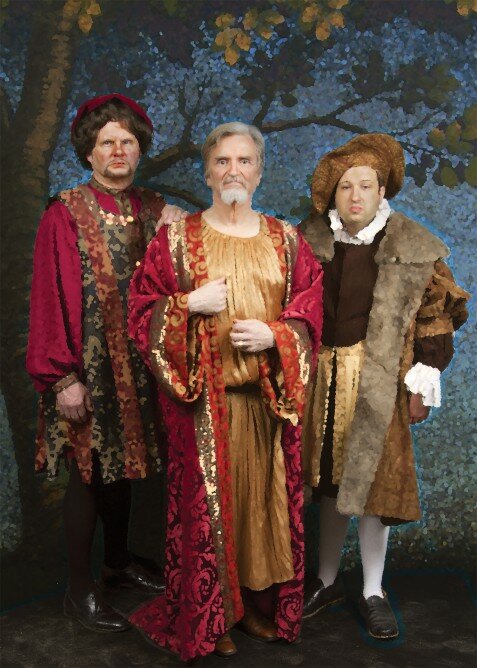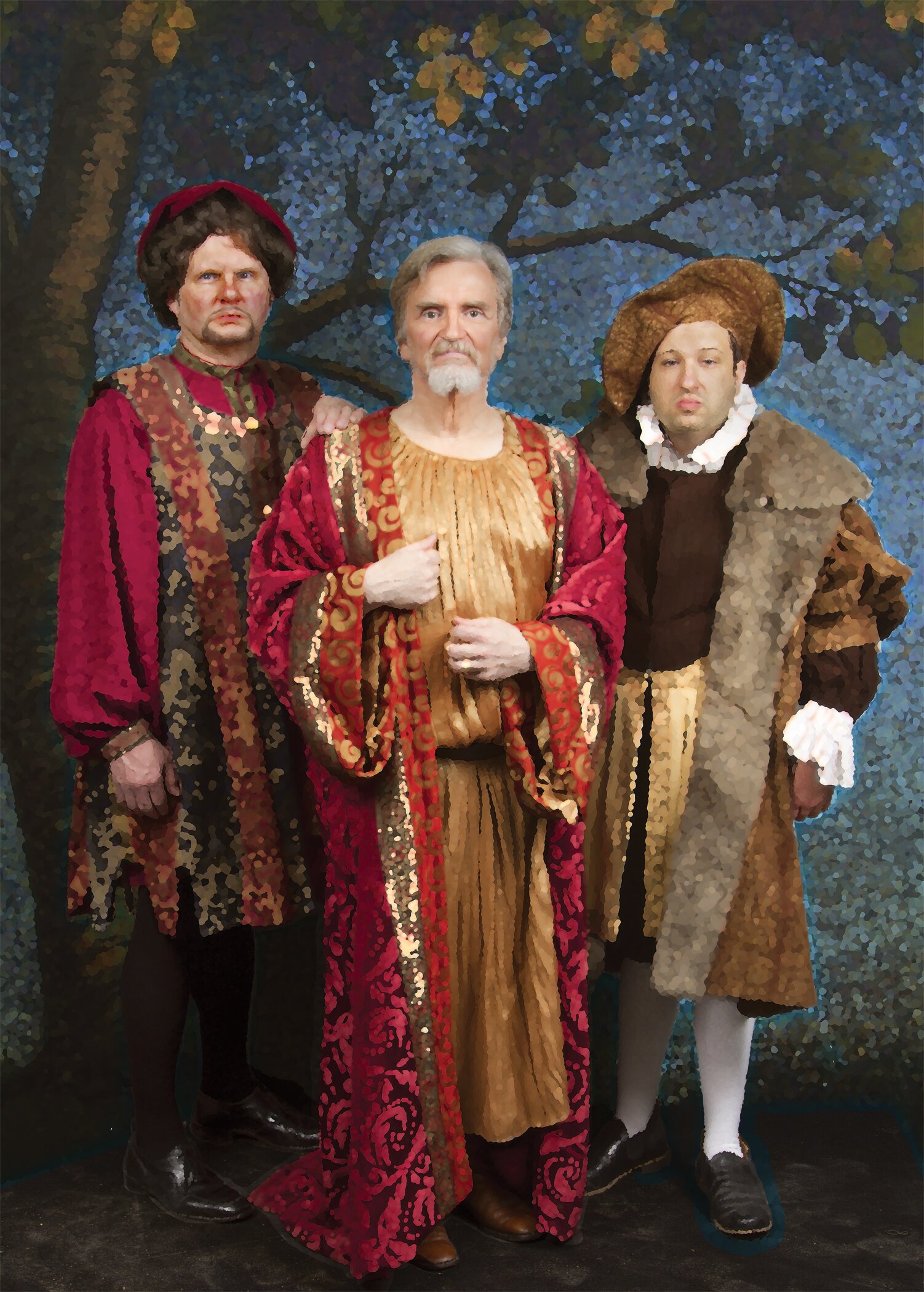
There’s good reason Gilbert & Sullivan comic operas continue to delight audiences even after 130-plus years. Don’t miss this chance to discover why.
Always overshadowed by its predecessor, The Mikado, Gilbert & Sullivan’s Ruddigore is nevertheless thoroughly enjoyable, expecially in Seattle Gilbert & Sullivan Society’s current strong production (through July 30 at Bagley Wright Theatre; tickets: 206-682-0796 or online).
How do you do a burlesque of a melodrama which is already a parody of the form?
G&S created an over-the-top spoof replete with reluctant aristocratic criminals in the form of bad baronets–and a mad woman, an ingenue, and an elderly spinster all in love with them. One criminal is dead and the ingenue has an eye to the main chance.
There’s a breath of fresh air in the form of a rambunctious sailor, who turns out to be a weasel, and a host of interfering ghosts disgorged from their family portraits.
Oh, and a bunch of professional bridesmaids who start singing their bridesmaids’ song at the drop of a hat, much to the irritation of other characters.
From the first production in 1887, there has been less than smooth realization of Gilbert’s impossible instructions that the ancestors come to life and step out of their frames to take part, from what are clearly just painted portraits. Then, the portraits failed to open and let the deceased bad baronets out. (In World War II the entire scenery, portrait frames and all, went up in smoke, thanks to a bomb-caused fire. Seattle G&S’s production–well, I’ll tell you later. It’s very clever, and almost works superbly!)
The company has fielded one of the strongest casts ever. There isn’t a bad actor or singer on stage and Bernard Kwiram, conducting in the pit, has his orchestra keeping the delightful music bright and well paced.
Many of the songs are almost tongue-twisters, and the singers have to enunciate extraordinarily clearly to get the words across. To their credit, they manage this to a high degree. The famous patter song for three characters in the second act nearly brought the house down Saturday night at the Bagley Wright Theatre, and one could still hear the words.
Here’s the set-up, and don’t worry if it sounds convoluted–it is: An early truly bad baronet enjoyed torturing witches, one of whom cursed his family as she died, dooming every succeeding baronet to commit a crime a day for ever. If he reneged, his ancestors, the enforcers, would torture him instead. To escape this, the current baronet ran away from home, leaving the title and curse to his younger brother, and now lives in a village as a gentleman farmer. Having fallen in love with the village beauty but too shy to press his case, he asks his newly returned seafaring foster brother to do his wooing for him. The upshot, or course, is that the beauty accepts the sailor. Consternation!
Meanwhile, the new bad baronet is trying to do a curse a day without harming anyone. In despair he calls on his deceased uncle for help. Not only the uncle, who descends from his portrait via the fireplace, but all the other ancestors come to life and harangue him for not doing enough, ordering him to abduct a woman at once.
All ends happily ever after, of course, and the music is as upbeat as you can imagine with plenty of tunes to take away running through your head.
John Brookes as the farmer baronet, Dave Ross as his younger brother tired of being bad, and Derek Sellers (terrific in voice, manner, and dances) as the seafaring man, are uniformly excellent, as is William J. Darkow as the uncle. Jenny Shotwell as beautiful Rose Maybud has a high and penetrating soprano just right for this role. Hollis Heron is a nicely deranged Mad Margaret, and Alyce Rogers, a consummate actress, is Dame Hannah–both singing well. The smaller roles and the chorus are, as always with Seattle G&S, well trained as both singers and actors.
Nathan Rodda’s sets and and Rebecca Foster’s costumes are perfect, and Christine Goff’s stage direction is unerring. It’s all even more amazing when you think that 125 volunteers took four months to put this together for the sheer love of it.
Oh, and the portraits? Well, a very modern device is used to have the painted portraits metamorphose into living characters. Mostly it works. Go and see for yourself.

